Epic price reversal for commodities in 2014
Whereas total returns for the S&P 500 Index and 10-Year Treasury bond stayed relatively stable throughout the year, commodities and the U.S. dollar both made an incredible about-face starting around late June, early July. If you don’t factor in China’s renminbi using purchasing power parity, the dollar is the world’s strongest currency. As I’ve written about on multiple occasions, this has weighed heavily on the commodities we track very closely and report on here at U.S. Global Investors, especially gold and crude oil.
According to BullionVault, in fact, 2014 was the worst year for commodities since 1986, when they gave back 8.85 percent.
That being said, let’s open up the Frank Talk archives and look back at the most important commodity stories of 2014.
Oil Dropped Nearly 50 Percent Since the Summer
It should come as no surprise that oil dominated the news in the second half of the year. Since its peak in June, when West Texas Intermediate (WTI) crude was priced at around $105 per barrel, oil has tumbled nearly 50 percent to settle in the mid-$50s. We haven’t seen a decline such as this since the financial collapse of 2008 and 2009.
So how did prices get here? How did they fall so steeply, so unexpectedly? It’s been a perfect storm, to be sure.
For one, the U.S. shale boom has brought about what some call an oil glut in the market. The Saudis have resisted oil production curbs with the intention of undercutting the world’s competition, namely the U.S., Russia and fellow members of the Organization of the Petroleum Exporting Countries (OPEC).
Global growth and the Purchasing Manager’s Index (PMI) are also cooling, leading to tepid demand for oil. As I’ve mentioned on numerous occasions, when the one-month moving average for the global PMI falls below the three-month moving average, WTI crude has fallen 100 percent of the time six months later. Though past performance can’t predict future results, history illustrates a convincing trend.
And finally there’s the strong dollar, which has historically put pressure on commodities, most notably crude.
Granted, battered oil prices have led to cheap gasoline, giving consumers all around the globe a welcome tax break this holiday season-a $330 billion tax break, to be exact.
But many oil companies involved in hydraulic fracturing, which is a pricier process than more conventional drilling methods, are starting to feel the pinch. Several companies have already been forced to temporarily close rigs in pricier shale regions, including the Eagle Ford in Texas and Bakken in North Dakota.
As calamitous as this might appear, there are still investment opportunities aplenty. In this recent Frank Talk, I took a contrarian view, arguing that, because oil stocks are currently priced so reasonably, now might be the time to pick up some exposure to this space. As I wrote:
For far too many investors, by the time they gain back the confidence to put money into oil stocks again, the rally might have already taken off, making it challenging to capture the full benefit of the upswing.
And there’s reason to believe that prices will normalize sooner rather than later. Brian Hicks, portfolio manager of the Global Resources Fund (PSPFX), stated that “oil prices are below where they should be, and hopefully they’ll start gravitating back to the equilibrium price of between $80 and $85 a barrel.”
Gold Found the Support Where Oil Didn’t, Was the Second-Best Currency of the Year
Like oil, gold was punished in the second half of the year because of the strong dollar. In the following chart, from an October Frank Talk, you can see just how much of an impact the greenback has had on the yellow metal this year alone:
In this Frank Talk, posted in June, I wrote:
There is always an emotional bias against gold, whether it is soaring high or dipping low, and that is why it’s important to manage these emotions when positioning a portfolio. At U.S. Global Investors we look objectively at the action of both gold stocks and gold bullion by monitoring these long-term data points and paying attention to buy and sell signals based on the trend of mean reversion.
This, of course, was back when gold bullion was priced at above $1,300. Since then it’s slipped nearly 10 percent, which might have discouraged some gold bugs.
But according to a recent article from Hard Asset Investor, gold was actually the second-best-performing currency of the year, second only to the U.S. dollar:
Given the strength of the dollar, it’s surprising that gold has held up as well as it has. At current prices, gold is only down 2 percent year-to-date, which is actually the best performance of any of the major non-fixed currencies.
Before gold and other commodities began to slump, they were actually performing very well, as I mentioned at the beginning of the piece. Back in July, this is what it looked like when you compared gold spot prices and the NYSE Arca Gold BUGS Index:
For the first time in two years, gold mining stocks were beating bullion, which was good news for both the commodity and equities. When miners do well, gold has tended to follow suit.
But then in mid-summer, prices began to fizzle. When you chart the two asset classes for the remainder of the year, this is what you get:
The problem is that when spot prices are between $1,000 and $1,200 an ounce-which is now the case-it’s challenging for miners to break even in terms of cash flow. Gold royalty companies, however, continue to impress. Royal Gold has returned 39 percent year-to-date, while Franco-Nevada has delivered 22 percent.
According to Ralph Aldis, portfolio manager of the Gold and Precious Metals Fund (USERX) and World Precious Metals Fund (UNWPX):
Much of the gold mining industry is underwater and can’t make money with these prices. We’ve seen capital programs being significantly cut back, in terms of companies looking to expand and build new mines. That’s all been put on hold. Those companies have been sufficiently scared enough that, even when gold prices do recover, they’re going to hold off on expansions because they might have lost the appetite to risk capital on new projects.
But on a positive note, “Because of this, we might see prices firm up, and companies will be rewarded.”
As always, we recommend a 10-percent weighting in gold: 5 percent in bullion, another 5 percent in gold stocks. Then rebalance every year.
In a Time When Many Commodities Were Depressed, Diamonds Retained Their Glitter
I spend a lot of time writing and speaking about gold and, more recently, oil. But another commodity that we at U.S. Global Investors care about is diamonds. After all, the U.S. is the world’s largest diamond market, responsible for half of the world’s $72 billion in sales made annually.
We hold luxury retailer Tiffany & Co. in our Gold and Precious Metals Fund (USERX). Although physical diamonds are a sound investment, diamond stocks can be even more of a prudent buy.
As you can see to the right, a $6,000 diamond purchased in 1987 would now be worth double that. But $6,000 in Tiffany stock purchased at the same time? Yeah, that would have returned 5,108 percent.
So guys, think about that next time you’re picking out a diamond ring or necklace for your significant other. Which do you think she might appreciate more?
In Frank Talk from August, I discuss diamond exploration and mining company Lucara Diamond, held in both USERX and our World and Precious Minerals Fund (UNWPX). Lucara continues to be an attractive asset, returning 18.5 percent year-to-date. Since June, it has been paying dividends.
South African Labor Strike Brought Platinum and Palladium into the Headlines
Back in June, a five-month labor strike in South Africa, the country’s longest, was seriously threatening the world supply of platinum and palladium, used predominantly in the production of catalytic converters. The African country is responsible for 37 percent of the world’s palladium, 78 percent of the world’s platinum, with Russia largely taking up the rest of the slack. Every day the strike dragged on, thousands upon thousands of both platinum group metals were being lost.
Because of the strike and supply concerns, prices of the precious metals surged, platinum to $1,500 an ounce and palladium to $850 an ounce.
The conditions of the strike were finally resolved by the end of June-and not a moment too soon, as reserves were beginning to run dry. Since then, prices have stabilized. Platinum is now just above $1,200, palladium, around $815.
Solar Energy Will Increasingly Drive Silver Demand
Tom Werner, president and CEO of solar panel-maker SunPower, believes that solar energy could be a $5 trillion industry within the next 20 years. It’s easy to see why he feels this way, as demand for photovoltaic (PV) installation ticks up every year.
This news bodes well for silver, between 15 and 20 grams of which is used in every solar panel manufactured. In fact, for the first time in over a hundred years, silver fabrication demand in photography has been outpaced by this new-ish, burgeoning technology.
Once a pie-in-the-sky idea, solar has finally emerged as a viable, near-mainstream source of energy that will increasingly play a crucial role in powering residences, businesses and factories. Some of the nation’s largest companies, including Walmart, Apple and Ford, already depend heavily on solar to power many of their facilities.
And with solar installation prices falling all the time-year-over-year, they’ve declined around 9 percent-more and more businesses and homeowners will join them, which should support silver demand.
Good Times, Bad Times
As I write in my whitepaper, “Managing Expectations”:
A keen awareness of the ebbs and flows of historical and socioeconomic conditions, on both the macro and micro scales, allows our investment management strategy to be more proactive than reactive.
Everything operates in cycles, including the weather, gold seasonal trends, four-year election terms and more. The domestic and global markets are no different. Commodities might be down this year, but as recently as 2009 and 2010, they were the best-performing asset class.
According to our Periodic Table of Commodities Returns, a perennial favorite among Frank Talk and Investor Alert readers, oil was the second-best performer just last year, returning 7.19 percent, while gold had its worst year since 1981. Such is the nature of investing. Every asset class, as I often say, has its own DNA of volatility.
Speaking of the Periodic Table, we will be sharing the eagerly-awaited commodities returns for 2014 early next year. Subscribers to our Investor Alert will be first to see them, so be sure to subscribe if you haven’t already done so.
I wish you all a safe and prosperous 2015! A perfect New Year’s Resolution is to supplement your retirement income with investment-grade municipal bonds, which you can accomplish through our Near-Term Tax Free Fund (NEARX). Read my latest story, “A Little Pillow Talk Turned Her Husband on to Bonds,” to learn more!
Index Summary
- Major market indices finished higher this week. The Dow Jones Industrial Average rose 1.40 percent. The S&P 500 Stock Index gained 0.88 percent, while the Nasdaq Composite advanced 0.87 percent. The Russell 2000 small capitalization index rose 1.61 percent this week.
- The Hang Seng Composite rose 0.78 percent; Taiwan gained 2.38 percent and the KOSPI advanced 0.94 percent.
- The 10-year Treasury bond yield rose nine basis points to 2.25 percent.
All American Equity Fund – GBTFX • Holmes Macro Trends Fund – MEGAX
Domestic Equity Market
The S&P 500 moved higher again this week, rising 0.89 percent and making a fresh 52-week high. Seasonally this is typically a good time for the market and this week proved no exception. The market embraced the strong economic data and the talk of a surge in consumer activity leading up to the Christmas holiday.
Strengths
- The utility sector was the best performing sector this week, returning 3.69 percent and continuing its recent string of strong performance. The whole sector was boosted by falling energy prices in general, with natural gas prices specificially dropping to their lowest levels in two years. The consumer discretion sector also outperformed, rising 1.92 percent. Retail related names were among the best performers, including Mattel Inc., Bed Bath & Beyond Inc. and Tiffany & Co.
- Express Scripts was the best performing company this week, rising 5.88 percent. The company reached an agreement to carry an alternative Hepatitis C drug, which will reduce its costs.
Weaknesses
- The health care sector was the worst performer this week, falling 1.95 percent. Biotech stocks were the main culprit as pharmacy benefit manager Express Scripts replaced Gilead Sciences’ Hepatitis C drug with a cheaper alternative, which caused concerns that pricing could come under pressure for the whole industry.
- The energy sector also underperformed this week as natural gas prices fell to the lowest levels in two years and many stocks gave back some of last week’s strong gains.
- The worst performing company this week was Gilead Sciences, which fell 13.52 percent. As mentioned above, one of the company’s key products is being replaced on Express Scripts formulary list by a cheaper alternative.
Opportunities
- Energy stocks bounced last week but weren’t able to follow through this week. The sector is still technically oversold and still could be in for a move into year end. Historically the industries that are down the most in the last half of a year, rally for the first six weeks of the New Year, which could be beneficial news for energy and materials.
- With gasoline prices continuing to fall, consumer discretionary and consumer staples sectors stand to benefit in the weeks and months ahead.
- Car sales are expected to be very high for the last weeks of the year and analysts are estimating next year to be a top performing year. With that, we see strength in all the suppliers and beneficiaries of this potentially top performing sector.
Threats
- The rally for U.S. energy producers may be short lived as OPEC countries seem to be acting individually rather than as a collective cartel, making predicting their future actions more difficult. This will be positive, however, for the inverse beneficiary companies in sectors such as airlines and consumer discretion.
- The European Central Bank still has not shown its cards on its plans to revive the European economy and if it plays a weak hand, Europe could end up in recession again.
- As conflict in Ukraine is on the rise again, Russia is feeling more and more pressure from a potential increase in sanctions. No one knows what Mr. Putin will do next and he has been unpredictable in the past.
U.S. Government Securities Ultra-Short Bond Fund – UGSDX • Near-Term Tax Free Fund – NEARX
The Economy and Bond Market
U.S. Treasury bonds sold off again this week, sending yields higher across the curve. Third quarter GDP was revised higher to 5 percent, a significant revision to the 3.9 percent last reported. This gave credence to the Fed’s somewhat hawkish tone after the recent Federal Open Market Committee meeting on December 17. Two-year treasury yields hit the highest levels since early 2011.
Strengths
- According to numerous accounts in the press, consumers made a late surge into the Christmas holiday and packed the stores, leading many to believe the holiday selling season was better than expected.
- Third quarter GDP was revised higher to 5 percent, which would make it the strongest quarter since 2003.
- Personal income in November rose 0.4 percent, while spending grew 0.6 percent. Both readings were ahead of expectations. Employment gains and falling gasoline prices were cited as drivers.
Weaknesses
- Housing indicators took a step back, with existing home sales falling 6.1 percent while new home sales declined 1.6 percent in November.
- Durable goods orders fell 0.7 percent in November, which was much weaker than expected. Weak business demand for computers, metals and electrical equipment was specifically highlighted as attributing to the decline.
- International economic indicators remain weak. This is particularly true for numerous emerging markets.
Opportunities
- The European Central Bank chose not to act recently but left the door wide open to full blown quantitative easing in the first quarter of 2015.
- Short-term bond yields have risen but with many headwinds to raising interest rates, the Fed may not be able to follow through on the threat of interest rate increases in 2015 and presents an opportunity. This is a very similar to a scenario that played out a year ago.
- Municipal bonds continue to look like an attractive alternative in the broad fixed income universe.
Threats
- Greece is generating negative headlines again and while it appears to be an isolated political event, it does reinforce the idea of the potentially fragile nature of the euro currency.
- Oil prices appear to be extremely oversold. Even a bounce in oil could change the mood in the market and bonds could sell off in reaction.
- The geopolitical situation remains unusually fluid and could take a negative turn.
World Precious Minerals Fund – UNWPX • Gold and Precious Metals Fund – USERX
Gold Market
For the week, spot gold closed at $1,196.00 down $0.35 per ounce, or 0.03 percent. Gold stocks, as measured by the NYSE Arca Gold Miners Index, fell 1.66 percent. The U.S. Trade-Weighted Dollar Index rose 0.5 percent for the week.
- With all the volatility surrounding global currencies during the back half of the year, it is important to point out why investors hold gold. Aside from the dollar, gold has been the best performing currency in 2014. For those who hold most of their assets in dollars, the beauty of gold may go unnoticed. However, for those in Russia who just saw half of their wealth disappear with the depreciation in the ruble, the benefits of gold are clear. This year provided investors with the perfect case study for highlighting the importance of gold.
- China silver imports rose to a nine-month high in November, reaching 244 million grams. In fact, silver imports increased 2.9 percent in the first eleven months of 2014 from a year earlier. Rising demand from China should help boost depressed silver prices.
- A spokesman for the U.S. Mint stated that it sold out of American Eagle silver coins on Wednesday. The U.S. Mint sold a record 44 million ounces of silver coins in 2014.
Weaknesses
- China palladium imports declined 57.2 percent in November from a year earlier. The drop in demand is being attributed to flat growth in auto production in the world’s largest vehicle market.
- Investors sold the most gold in 18 months as holdings in the SPDR Gold Trust sharply declined. Declining oil prices and fear of higher interest rates have caused many investors to shy away from the precious metal.
- Gold mining stocks slumped this week after higher than expected GDP growth in the United States boosted the dollar. The NYSE Arca Gold Miners Index fell 1.6 percent this week.
Opportunities
- Iamgold Corp. announced that it is actively looking for acquisitions and is open to being acquired as well, moving into 2015. CEO Steve Letwin said the company could make purchases amounting up to $800 million alone or consider partner transactions. Iamgold is expecting $500 million in cash after the recent sale of a Canadian mine.
- The gold-to-silver price ratio reached its highest level since January 2009 this week. The ratio has more than doubled since it bottomed in April 2011, primarily driven by a substantial decline in silver. The recent peak could be a sign that silver prices will reverse and catch up to gold.
- According to a report by the World Platinum Investment Council (WPIC), the platinum market is expected to be short 885,000 ounces in 2014. The supply shortage is primarily the result of strikes in South Africa. Demand is expected to increase, which should put upward pressure on platinum prices, which have been significantly depressed.
Threats
- The dollar reached its highest level since 2006 this week as GDP growth in the United States came in unexpectedly strong. The dollar’s rapid rise has reduced the appeal of gold as investors seek to hold dollar denominated assets.
- The eurozone has yet to enact its quantitative easing program to revive economic growth and inflation. With declining oil prices pushing down inflation, gold will continue to be less attractive as an inflation hedge without any policy intervention.
Energy and Natural Resources Market
Strengths
- Construction and engineering stocks bounced for their second week despite prevalent risk off sentiment. The S&P Supercomposite Construction and Engineering Index rose 2.34 percent this week.
- Utilities stocks rallied as investors turned their eyes toward more defensive plays this week. The S&P 500 Utilities Index rose 3.67 percent this week.
- Railroad stocks, which have been remarkably resilient through the global energy downturn, rose for their second straight week this week. The S&P Supercomposite Railroads Index closed up 1.91 percent this week.
Weaknesses
- Oil and gas drilling stocks failed to continue their remarkable comeback this week as crude oil prices fell. The S&P Supercomposite Oil & Gas Drilling Index fell 5.52 percent this week.
- Construction and Materials stocks gave back a part of their gains from last week. The S&P Supercomposite Construction and Materials Index fell 3.25 percent this week.
- Gold stocks closed down this week as stronger data out of the United States reduced the precious metal’s attractiveness as a hedge. The NYSE Arca Gold Miners Index fell 1.36 percent this week.
Opportunities
- Saudi Arabia is using an $80 per barrel oil price assumption in its budget for 2015, implying the world’s largest exporter sees oil recovering soon. In fact, Saudi Arabia Oil Minister Ali Al-Naimi said over the weekend that he is 100 percent sure that prices will go up as they have nowhere else to go. Furthermore, Iraq’s Oil Minister, Adel Abdul Mahdi, said that OPEC will need to step in if oil declines further. It would appear that oil prices have reached their bottom. The long awaited rally in oil prices should be a huge tailwind for energy producers.
- Fighting in Libya is escalating and is finally starting to play a larger role in oil prices. It can be argued that geopolitical risk has been severely lacking in the premium for oil prices of late. If properly priced in, oil should rally.
- There are rumors that the China Iron and Steel Association has filed plans with the government asking for approval to get rid of the tax rebate on steel-product exports. Such a policy move should be beneficial to U.S. producers. However, it could negatively impact iron ore prices.
Threats
- The dollar reached fresh highs for the year this week. Strong third quarter GDP growth data caused the greenback to break its key 2009 resistance level. Associated with falling commodity prices, the rising dollar remains a threat.
- Although many have called the recent dip in oil prices the bottom, there remains the risk that crude could consolidate at current levels, which would extend the time frame under which energy producers remain under pressure.
China Region Fund – USCOX • Emerging Europe Fund – EUROX
Emerging Markets
Strengths
- After taking a tremendous plunge last week, the Russian ruble was able to recover. News of the government encouraging exporters to sell their dollars as well as increased government support for domestic banks helped ease investor sentiment towards the volatile currency. The ruble appreciated 10.73 percent against the dollar.
- Oil producing countries gained this week as markets are beginning to recognize the oversold condition of oil prices. Qatar, Colombia, and the United Arab Emirates rose 11.33, 3.50, and 3.93 percent respectively.
- After selling off in the first half of the week, China A Shares rallied for another weekly gain. A significant part of the rally, as well as the bull market as a whole, is renewed speculation of further easing from the central government. The Shanghai Stock Exchange Composite Index closed up 1.58 percent.
Weaknesses
- Indian stocks declined this week as the rupee saw its third weekly decline against the dollar. During the eleven days through December 22, Indian shares saw $1.1 billion in outflows. Recent uncertainty and political opposition surrounding the widely favored reforms proposed by the new government have caused a pullback in Indian equities. The S&P BSE Sensex Index fell 0.48 percent this week.
- The political uncertainty surrounding Greece continues to be a burden on the market. Investors remain skeptical that Prime Minister Antonis Samaras will obtain the required 180 votes by the final vote on December 29. The Athens Stock Exchange General Index fell 1.07 percent this week.
- The much higher than expected revised third quarter GDP growth data in the United States led the dollar to reach its highest level since 2006. The dollar’s rally continues to signal the weakness in global growth and commodities, a clear threat to emerging markets.
Opportunities
- Amid market concerns over tighter liquidity towards year end, the Chinese central bank allegedly decided to temporarily waive reserve requirements for savings that commercial banks hold for non-deposit taking financial institutions, tantamount to a significant reduction of the official reserve requirement ratio. Chinese authorities’ consistent policy easing actions should help support further re-rating for Chinese banks still trading in undervalued territory.
- The Brazilian markets are getting a boost due to speculation the government will further support the country’s currency. The real has declined substantially over the past few months as the global commodity depression weighed on domestic companies. Brazil’s central bank is forecasting above target inflation for the next two years, which implies there is plenty of room to hike interest rates. Any further increase in interest rates should boost the real.
- Astonishingly cheap energy prices and low interest rates continue to spur investment and growth in Asia. With no certain catalyst in the near term to correct either one of these two conditions, Asian markets should continue to benefit from the current environment.
Threats
- Accelerating direct investment from both foreign and domestic Chinese dairy companies since 2012 have significantly tilted the supply-demand balance in the global milk market. With China’s raw milk prices at record premium to global benchmark and competition intensifying in the infant milk-based formula market, challenges are on the rise for Chinese dairy sector players from upstream to downstream.
- Russian Finance Minister Anton Siluanov continues to provide the public with a dismal forecast for the Russian economy in 2015. Predicting a recession, Siluanov stated that Russia will face a considerably higher deficit next year, which will most likely require further use of the country’s dwindling reserves. Gross domestic product in 2015 is expected to shrink by 4.5 percent according to the Russian Central Bank. What’s worse, Standard & Poor’s said this week that it is considering cutting Russia’s credit rating to junk. As Russia continues to harden its geopolitical stance against the West, it seems that the sanctions will remain in the near term. With interbank lending rates at record highs and limited availability of foreign capital, Putin is setting the stage for a shocking credit crunch in Russia.
- With the final round of presidential elections in Greece to be held on Monday, Prime Minister Samaras is running out of time to obtain the required 180 votes for electing a president. Failing to do so will send the country into general elections, which are expected to result in the challenging Syriza party coming to power. The Syriza party seeks a writedown on Greece’s debt, a move that could jeopardize Greece’s position within the eurozone. Furthermore, the party aims to remove and reverse many of the tough austerity measures put in place over the last few years. Since coming to power in 2012, Samaras has been able to put Greece on track to achieving the first balanced budget in over 40 years. With his party losing power, Greece could see much of its hard achieved progress erased.
Leaders and Laggards
The tables show the weekly, monthly and quarterly performance statistics of major equity and commodity market benchmarks of our family of funds.

Please consider carefully a fund’s investment objectives, risks, charges and expenses. For this and other important information, obtain a fund prospectus by visiting www.usfunds.com or by calling 1-800-US-FUNDS (1-800-873-8637). Read it carefully before investing. Distributed by U.S. Global Brokerage, Inc.
All opinions expressed and data provided are subject to change without notice. Some of these opinions may not be appropriate to every investor.
Foreign and emerging market investing involves special risks such as currency fluctuation and less public disclosure, as well as economic and political risk. By investing in a specific geographic region, a regional fund’s returns and share price may be more volatile than those of a less concentrated portfolio.
The Emerging Europe Fund invests more than 25 percent of its investments in companies principally engaged in the oil & gas or banking industries. The risk of concentrating investments in this group of industries will make the fund more susceptible to risk in these industries than funds which do not concentrate their investments in an industry and may make the fund’s performance more volatile.
Because the Global Resources Fund concentrates its investments in a specific industry, the fund may be subject to greater risks and fluctuations than a portfolio representing a broader range of industries.
Gold, precious metals, and precious minerals funds may be susceptible to adverse economic, political or regulatory developments due to concentrating in a single theme. The prices of gold, precious metals, and precious minerals are subject to substantial price fluctuations over short periods of time and may be affected by unpredicted international monetary and political policies. We suggest investing no more than 5 percent to 10 percent of your portfolio in these sectors.
Bond funds are subject to interest-rate risk; their value declines as interest rates rise. Tax-exempt income is federal income tax free. A portion of this income may be subject to state and local income taxes, and if applicable, may subject certain investors to the Alternative Minimum Tax as well. The Near-Term Tax Free Fund may invest up to 20% of its assets in securities that pay taxable interest. Income or fund distributions attributable to capital gains are usually subject to both state and federal income taxes. The Near-Term Tax Free Fund may be exposed to risks related to a concentration of investments in a particular state or geographic area. These investments present risks resulting from changes in economic conditions of the region or issuer.
Investing in real estate securities involves risks including the potential loss of principal resulting from changes in property value, interest rates, taxes and changes in regulatory requirements.
Past performance does not guarantee future results.
Some link(s) above may be directed to a third-party website(s). U.S. Global Investors does not endorse all information supplied by this/these website(s) and is not responsible for its/their content.
These market comments were compiled using Bloomberg and Reuters financial news.
Fund portfolios are actively managed, and holdings may change daily. Holdings are reported as of the most recent quarter-end.
Holdings as a percentage of net assets as of 9/30/2014:
SPDR Gold Trust: Gold and Precious Metals Fund, 0.32%
Iamgold Corp.: Gold and Precious Metals Fund, 0.90%; World Precious Minerals Fund, 0.19%
Gilead Sciences Inc.: All American Equity Fund, 1.84%; Holmes Macro Trends Fund, 1.93%
Express Scripts Holding Company: 0.00%
Mattel Inc.: 0.00%
Bed, Bath & Beyond: 0.00%
Tiffany & Co.: Gold and Precious Metals Fund, 0.44%
Walmart: 0.00%
Sunpower: 0.00%
Royal Gold Inc.: Gold and Precious Metals Fund, 3.44%, World Precious Minerals Fund, 1.01% All American Equity Fund, 0.98%, Holmes Macro Trends Fund, 0.98%
Tiffany & Co: Gold and Precious Metals Fund, 0.44%
Lucara Diamond Corp.: Gold and Precious Metals Fund, 1.07%, World Precious Metals Fund, 1.58%
Franco-Nevada Corp: Gold and Precious Metals Fund, 6.44%, World Precious Metals Fund, 1.16%; All American Equity Fund, 1.27%; Holmes Macro Trends Fund, 1.47%
Ford Motor Co.: 0.00%
Apple Inc.: All American Equity Fund, 4.35%, Holmes Macro Trends Fund, 4.56%
*The above-mentioned indices are not total returns. These returns reflect simple appreciation only and do not reflect dividend reinvestment.
The Dow Jones Industrial Average is a price-weighted average of 30 blue chip stocks that are generally leaders in their industry.
The S&P 500 Stock Index is a widely recognized capitalization-weighted index of 500 common stock prices in U.S. companies.
The Nasdaq Composite Index is a capitalization-weighted index of all Nasdaq National Market and SmallCap stocks.
The Russell 2000 Index® is a U.S. equity index measuring the performance of the 2,000 smallest companies in the Russell 3000®, a widely recognized small-cap index.
The Hang Seng Composite Index is a market capitalization-weighted index that comprises the top 200 companies listed on Stock Exchange of Hong Kong, based on average market cap for the 12 months.
The Taiwan Stock Exchange Index is a capitalization-weighted index of all listed common shares traded on the Taiwan Stock Exchange.
The Korea Stock Price Index is a capitalization-weighted index of all common shares and preferred shares on the Korean Stock Exchanges.
The Philadelphia Stock Exchange Gold and Silver Index (XAU) is a capitalization-weighted index that includes the leading companies involved in the mining of gold and silver.
The U.S. Trade Weighted Dollar Index provides a general indication of the international value of the U.S. dollar.
The S&P/TSX Canadian Gold Capped Sector Index is a modified capitalization-weighted index, whose equity weights are capped 25 percent and index constituents are derived from a subset stock pool of S&P/TSX Composite Index stocks.
The S&P 500 Energy Index is a capitalization-weighted index that tracks the companies in the energy sector as a subset of the S&P 500.
The S&P 500 Materials Index is a capitalization-weighted index that tracks the companies in the material sector as a subset of the S&P 500.
The S&P 500 Financials Index is a capitalization-weighted index. The index was developed with a base level of 10 for the 1941-43 base period.
The S&P 500 Industrials Index is a Materials Index is a capitalization-weighted index that tracks the companies in the industrial sector as a subset of the S&P 500.
The S&P 500 Consumer Discretionary Index is a capitalization-weighted index that tracks the companies in the consumer discretionary sector as a subset of the S&P 500.
The S&P 500 Information Technology Index is a capitalization-weighted index that tracks the companies in the information technology sector as a subset of the S&P 500.
The S&P 500 Consumer Staples Index is a Materials Index is a capitalization-weighted index that tracks the companies in the consumer staples sector as a subset of the S&P 500.
The S&P 500 Utilities Index is a capitalization-weighted index that tracks the companies in the utilities sector as a subset of the S&P 500.
The S&P 500 Healthcare Index is a capitalization-weighted index that tracks the companies in the healthcare sector as a subset of the S&P 500.
The S&P 500 Telecom Index is a Materials Index is a capitalization-weighted index that tracks the companies in the telecom sector as a subset of the S&P 500.
S&P Supercomposite Construction and Engineering Index is a capitalization-weighted index.
S&P Supercomposite Railroads Index is a capitalization-weighted index.
S&P Supercomposite Oil & Gas Drilling Index is a capitalization-weighted index.
S&P Supercomposite Construction and Materials Index is a capitalization-weighted index.
The S&P BSE Sensex Index is a free-float market-weighted stock market index of 30 well-established and financially sound companies listed on the Bombay Stock Exchange.
The NYSE Arca Gold Miners Index is a modified market capitalization weighted index comprised of publicly traded companies involved primarily in the mining for gold and silver.
The Consumer Price Index (CPI) is one of the most widely recognized price measures for tracking the price of a market basket of goods and services purchased by individuals. The weights of components are based on consumer spending patterns.
The Athens Stock Exchange General Index is a capitalization-weighted index of Greek stocks listed on the Athens Stock Exchange.
The Shanghai Stock Exchange Composite Index is a capitalization-weighted index that tracks the daily price performance of all A-shares and B-shares listed on the Shanghai Stock Exchange.
The Purchasing Manager’s Index is an indicator of the economic health of the manufacturing sector. The PMI index is based on five major indicators: new orders, inventory levels, production, supplier deliveries and the employment environment.
By Frank Holmes
CEO and Chief Investment Officer
U.S. Global Investors
More News
{{ commodity.name }}
{{ post.title }}
{{ post.date }}

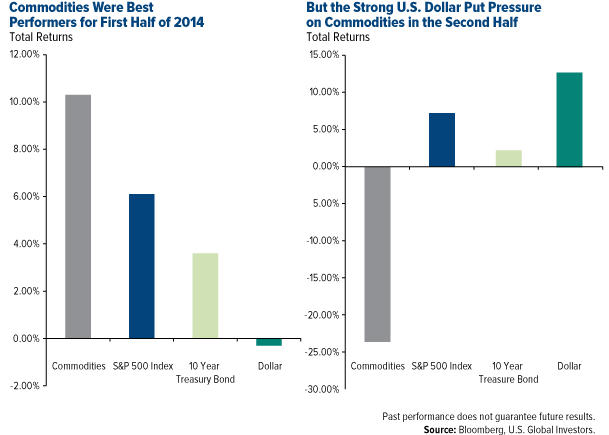



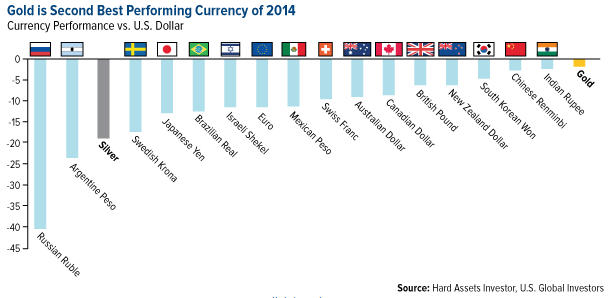
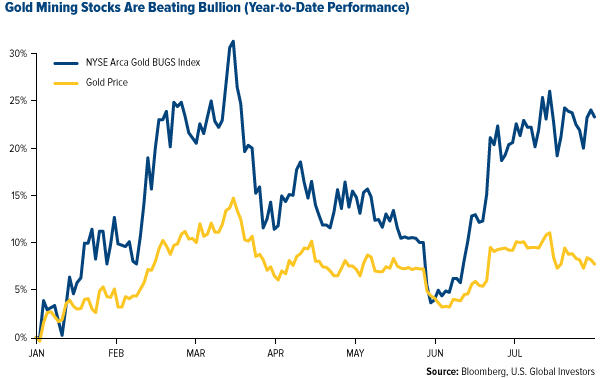




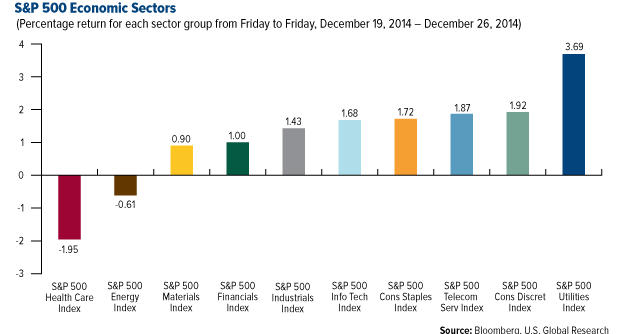


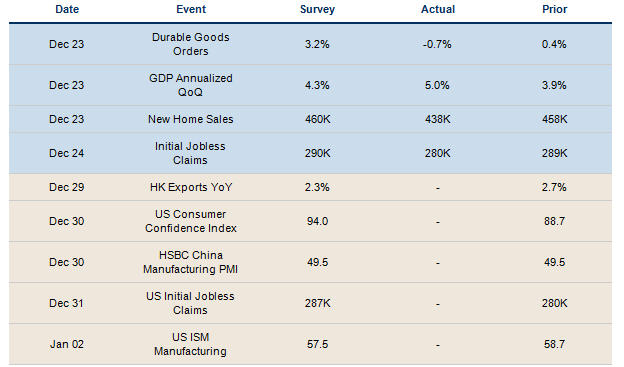

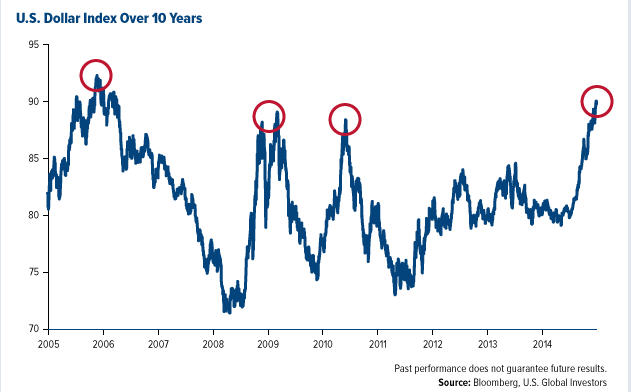






Comments